Glaciers
A glacier is a persistent body of dense ice exceeding a surface area of 0.1 km² constantly moving under its own gravity; it forms where the accumulation of snow exceeds its ablation (melting and sublimation) over many years, often centuries. Glaciers slowly deform and flow due to stresses induced by their weight, creating crevasses, seracs, and other distinguishing features. They also abrade rock and debris from their substrate to create landforms such as cirques and moraines. Glaciers form only on land and are distinct from the much thinner sea ice and lake ice that form on the surface of bodies of water.
On Earth, 99% of glacial ice is contained within vast ice sheets in the polar regions, but glaciers may be found in mountain ranges on every continent, and on a few high-latitude oceanic islands. Between 35°N and 35°S, glaciers occur only in the Himalayas, Andes, a few high mountains in East Africa, Mexico, New Guinea and on Zard Kuh in Iran.
Glacial ice is the largest reservoir of freshwater on Earth. Many glaciers from temperate, alpine and seasonal polar climates store
water as ice during the colder seasons and release it later in the form
of meltwater as warmer summer temperatures cause the glacier to melt, creating a water source
that is especially important for plants, animals and human uses when
other sources may be scant. Within high altitude and Antarctic
environments, the seasonal temperature difference is often not
sufficient to release meltwater.
Because glacial mass is affected by long-term climate changes, e.g., precipitation, mean temperature, and cloud cover, glacial mass changes are considered among the most sensitive indicators of climate change and are a major source of variations in sea level.
Found only in Antarctica and Greenland, ice sheets are enormous
continental masses of glacial ice and snow expanding over 50,000 square
kilometers. The ice sheet on Antarctica is over 4200 meters thick in
some areas, covering nearly all of the land features except the
Transantarctic Mountains, which protrude above the ice. Another example
is the Greenland ice sheet.
Ice shelves occur when ice sheets extend over the sea, and float on
the water. In thickness they range from a few hundred meters to over
1000 meters. Ice shelves surround most of the Antarctic continent.
Retreating ice shelves may provide indications of climate change. For
example, the Larsen Ice Shelf has been retreating since the spring of
1998. Check out some of the remotely sensed satellite images scientists used to monitor the ice shelf breakup.
Ice caps are miniature ice sheets, covering less than 50,000 square
kilometers. They form primarily in polar and sub-polar regions that are
relatively flat and high in elevation. To really see the difference
between an ice cap and an ice sheet, compare Iceland and Greenland on a
globe or world map. The much smaller mass of ice on Iceland is an ice
cap.
 |
| glacier |

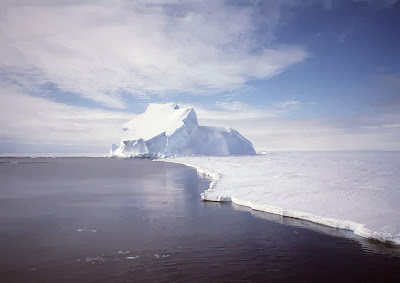
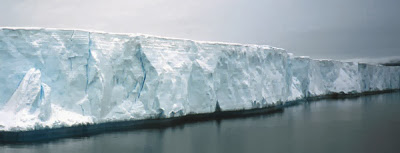
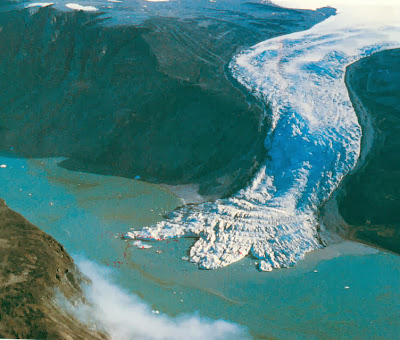
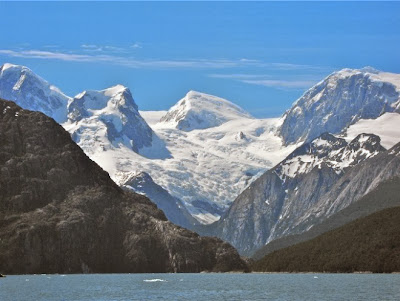
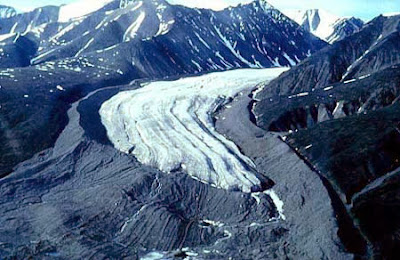
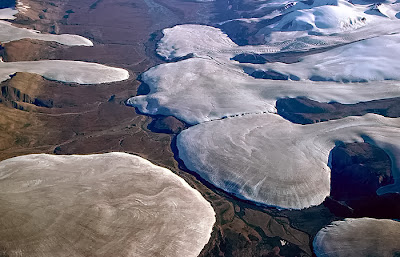












No comments:
Post a Comment